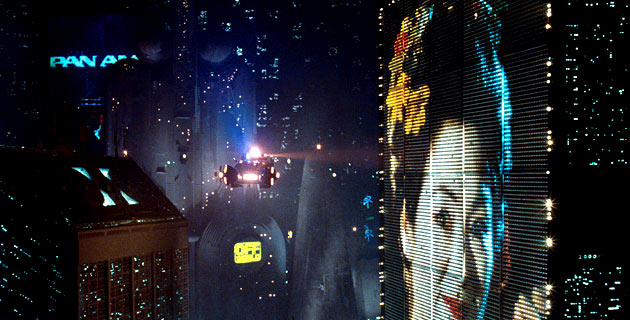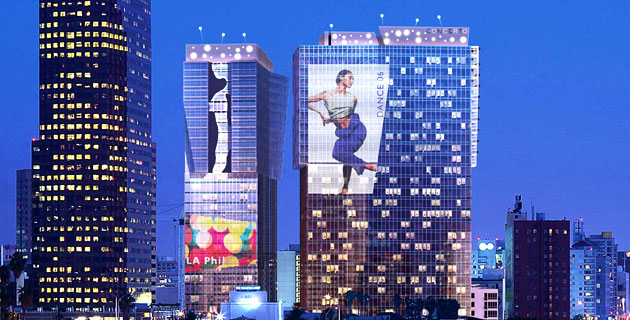What started out as a search for the Tagalog in Star Wars turned into a bizarre backward-and-forwarding of Google searches about something we touched on the other day: the presence of “Asian-ness” and Orientalism in science fiction. Some intriguing things I found (which Hung Te might know more about, having expressed interest in class?):
\”0/1 v. Zion: Techno-Orientalism in \’The Matrix\’\” — An essay presented at the Visualizing the City Symposium at the University of Manchester in 2005. A choice quote that has to do with the films we just happened to have watched:
Hegel famously wrote in The Philosophy of History, “The History of the World travels from East to West, for Europe is absolutely the end of History, Asia the beginning” (103-04). U.S. and European science-fiction filmmakers, clearly not Hegelians, have assumed the opposite to be the case: to them, the future is Asian.
Lisa Nakamura, borrowing the term from Greta Niu, calls this “techno-orientalism”: sci-fi films and fictions, writes Nakamura, use “images of Japanese geishas, ninjas, and samurai warriors” to “establish the distinctive look and feel of a cyberpunk future,” resulting in “a high-tech variety of racial stereotyping” (Nakamura 63). Nakamura locates the beginnings of cinematic techno-orientalism in Ridley Scott’s 1982 Blade Runner, but Western filmmakers began using Asian cultural tropes to signify the (often-dystopic, always-radically-Other) future of humankind at least as early as the 1920s, when the first of the Fu Manchu pictures was released, and Fritz Lang’s 1927 Metropolis opened, introducing the Robot Maria, as David Desser says, “in a nightclub of ‘Oriental splendour’, the Yoshiwara (the name of the traditional pleasure quarter of Japan’s Edo, now Tokyo)” (Desser 82-83).
Writer gailderecho’s assertion in the beginning about science-fiction filmmakers exoticizing the future represents a shift in Orientalism:
Techno-Orientalism: Shattering the Mirror of Itself — Maya Kovskaya explains:
As media critics Morley and Robins have noted, with the rise of Information Capitalism and Japan’s technological ascendancy, the functioning of Orientalism as a sign was altered by its combination with technology. Through the inversion of meanings attendant to Techno-Orientalism, Japan, and now the rapidly developing Greater Asia, has become a sign of the (technologically advanced?) future, rather than the (backward?) past, presaging a shift in power relations and alignment of new global communities. Toshiya Ueno argues that Techno-Orientalism functions as a “a semi-transparent or two-way mirror,” through which ‘Orient’ and ‘Occident’ apprehend each other, forming invidious images of an Other against which a self is constituted.
And (I don’t remember quite how this happened) I was inexplicably led back to the beginning of everything – our class discussion on Blade Runner:
Johnny – any thoughts?



This was REALLY interesting. I developed my own ideas on techno-orientalism through dissecting a short sci-fi story by William Gibson called “The Winter Market”. It’s one of his only works set in Vancouver (besides a part of his newest novel “Spook Country”.
It is fantastic and plays around with cyborgs, emerging collective consciousness online, and techno-orientalism all within our own city. It’s set around West 4th, and Granville Island (the market in the title).
Seriously read it if you have 15 minutes to spare. I love it:
http://www.gomi-no-sensei.com/mindgomi/TheWinterMarket.pdf
( — the gibson story is awesome! )
I love these images – where is the first one from? – with the cargo-ships, seagulls and generic highrise profiles it could easily pass as Vancouver. (not completely related, but do you remember the karaoke bar by the container port downtown? You mentioned something about the clientele consisting mainly of cargo-ship workers – the city’s transient denizens; let’s go again soon.)
looking at the second image, it seems like a poignant illustration of the ideas mentioned in the post – the vehicle’s probing searchlight cast over an exotic projection like some submarine illuminating fantastic deep-ocean life forms.
And one last thing – It’s funny how pervasive Blade Runner has become in contemporary architecture – while LA may have license to indulge in its own celebrity, even Paris has hinted at a compulsion for the movie’s imagery: While his version won’t be built, and his later proposals did away with the element, Jean Nouvel‘s original design for the Tour Phare in La Defence included a rotating screen that displays a familiar image.
i love that first picture! it immediately reminded me of the photo you posted later in your post from blade runner!